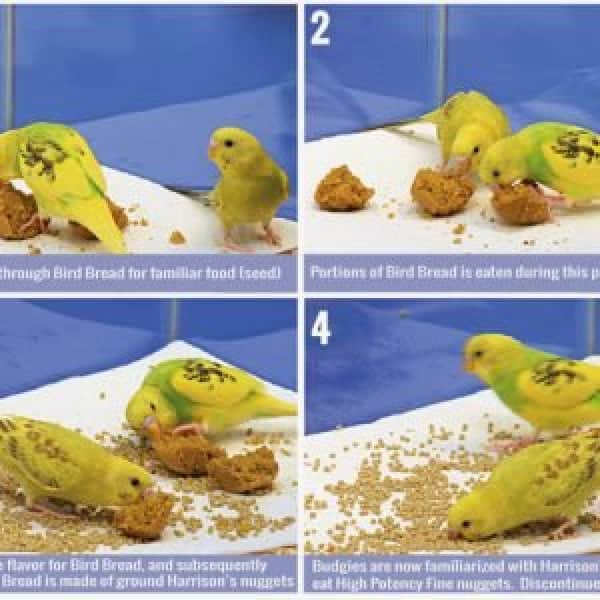Last Updated on by Mitch Rezman
Quick Tips for Conversion to Harrison’s Bird Foods
Some birds will readily eat Harrison’s while others may require a little help.If your bird exhibits resistance to conversion try the following tips:
1. Bird Bread Mix can be used as an extremely effective conversion tool. Food that the bird currently eats can be added to the mix and baked in the bread. Gradually reduce the amount of that food and replace it with the appropriate Harrison formula.
2. Change the bird’s environment. Try moving your bird to a new enclosure, such as a box, aquarium or even a new cage. Remove all the toys, perches and bowls and offer High Potency™ on a solid surface of the floor.
3 Use a mirror or white paper. Sprinkling food over a mirror or sheet of white paper placed on the bottom of the enclosure works especially well for budgies. A bird old enough to be socialized may eat to compete with the “rival” bird in the mirror. A white paper background may draw attention to the food particles.
4. Slowly “wean” your bird from seeds. In the evening, offer seeds from the food bowl for only 1 hour. Then, remove the seeds and replace with High Potency.™ The next day, give your bird seeds for only 30 minutes in the morning and evening. On the third day, reduce the time to only 15 minutes twice a day. And finally, offer only High Potency™ on the fourth day. Watch the bird’s droppings.
5. Feed your bird at mealtime. Place the food on a plate, move it around with your finger or a spoon, and pretend to eat it in front of your bird.
6. Offer Power Treats or Pepper Lifetime Coarse™ Birds love the taste of Power Treats or Pepper Lifetime Coarse™ These foods can be crushed for smaller birds. Adult Lifetime Mash™ also has an appealing taste to help your bird try new food.
7. Use a converted bird as a role model. House your bird near another that’s already eating Harrison’s Bird Foods, or use a “trainer bird” in the same cage as a role model for eating.
8. Heat (warm) or moisten the food. Heat the High Potency™ slightly or moisten it with a small amount of fruit juice orAVIx Sunshine Factor.®
9. Schedule a supervised diet change with your veterinarian. Some birds do not recognize Harrison’s as food, and placing the bird in a clinic where monitoring can be done will help keep your bird healthy through the conversion.
If the conversion steps don’t work the first time, you can feed the familiar food for a short time and then try again. The effort is worthwhile for the long term health of your bird.
The bird’s weight (in grams), body condition, attitude and droppings should be monitored carefully on a daily basis in small and medium birds and at least twice a week in large birds.
How to Evaluate Your Bird’s Droppings
Clean white paper or other smooth surfaces can be used to collect the droppings. The normal appearance of the feces is usually soft and brown when the bird is eating a formulated diet but may be abnormally dry and black, yellow or green with a seed diet.
The normally clear urine may be increased in the amount due to excess consumption of fruits and vegetables. Normal urates are creamy-white waste from the kidneys and are often suspended in the liquid urine or are “wrapped around” the feces. Any color change in the urates is abnormal.
A sick bird may show a change in the volume, color, consistency or frequency of droppings. Feces from egg-laying females, baby birds on hand-feeding formulas and the first void of the morning may be larger than normal, and urine output may increase when the bird is nervous or ill.
A sick bird may show a change in the volume, color, consistency or frequency of droppings. Feces from egg-laying females, baby birds on hand-feeding formulas and the first void of the morning may be larger than normal, and urine output may increase when the bird is nervous or ill.
Diet Conversion: Small Bird
TIPS FOR CONVERTING SMALL BIRD SPECIES TO HARRISONS’ BIRD FOODS
Diet Conversion is a Challenge not to be taken Lightly! It is imperative to immediately return a bird to its original diet if it refuses to eat the new diet.
THE EASY THREE-STEP PROGRAM TO CHANGE A BIRD’S DIET
1. Offer bake-at-home Harrison’s Bird Bread Mix as a way to introduce a new food other than seeds:
Diet Change Via Harrison’s Bird Bread
2. Offer High Potency Fine (cockatiels or other similarly sized small to medium birds) or High Potency Super Fine (Canaries, Budgies and other similarly sized small birds) formula.
Small birds have a rapid metabolism and can starve to death in as little as 36-48 hours if they do not get enough food to eat. Owners should consult with an avian veterinarian and set up a conversion program that works but does not harm the bird in the process.
Modifying a bird’s diet is one of the biggest behavioral challenges an owner will undertake. Most issues can be overcome with patience and perseverance. Educating the owner about the benefits of feeding a formulated diet versus a seed-based diet is the first challenge.
Any dietary changes should be undertaken gradually. An important concern is the bird’s refusal to eat “new” food, leading to significant weight loss. Weighing the bird (in grams) on a daily basis using a gram scale is the best method for monitoring adequate food consumption.
Weight fluctuations greater than 10% are considered problematic. Even if provided with supplemental food, birds can starve to death while merely appearing to chew their food but not consuming it. Grinding the food into a fine powder is not the same as eating the food.
Monitoring droppings is an excellent indication of the amount of food the bird is eating. Prior to the diet change, the number and character of the droppings (color, amount, liquid, form, shape, lack of odor, staining) should be noted. Any change in the volume or number of droppings (usually a dramatic decrease in amount) indicates insufficient food consumption.
Owners should not be confused by the appearance of wet droppings, which they may assume to be normal. Wet droppings usually have little fecal matter produced from food consumption. Wet droppings are often a sign of weight loss as fat and muscle are converted to energy and water. The character of the droppings will change as the bird consumes more formulated diet – they usually become more firm with a definite shape.
Medium – Large Bird Conversion
Tips for Converting Large Bird Species to Harrisons’ Bird Foods
Diet Conversion is a Challenge not to be taken Lightly! The single most important thing you can do for a bird is to feed it right.
THREE EASY OPTIONS FOR CHANGING MEDIUM-LARGE BIRDS’ DIET
1. Offer bake-at-home Harrison’s Bird Bread Mix as a way to introduce a new food other than seeds. SEE: Diet Change Via Harrison’s Bird Bread
2. Incorporate the “Controlled Meals Method” as a tool to transition even the fussiest medium to large bird. SEE: The “Controlled Meals” Conversion Method
Any dietary changes should be undertaken gradually. An important concern is the bird’s refusal to eat a “new” food, leading to significant weight loss. Weighing the bird (in grams) on a daily basis using a gram scale is the best method for monitoring adequate food consumption.
Weight fluctuations greater than 10% are considered problematic. Even if provided with supplemental food, birds can starve while merely appearing to chew their food but not consuming it. Grinding the food into a fine powder is not the same as eating the food.
Monitoring droppings is an excellent indication of the amount of food the bird is eating. Prior to the diet change, the number and character of the droppings (color, amount, liquid, form, shape, lack of odor, staining) should be noted. Any change in the volume or number of droppings (usually a dramatic decrease in amount) indicates insufficient food consumption.
Owners should not be confused by the appearance of wet droppings, which they may assume to be normal. Wet droppings usually have little fecal matter produced from food consumption. Wet droppings are often a sign of weight loss as fat and muscle are converted to energy and water. The character of the droppings will change as the bird consumes a more formulated diet – they usually become more firm with a definite shape.
Author Profile

Latest entries
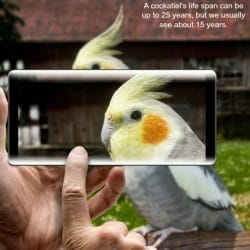 Birds & LightingMay 16, 2025I Am Seeking Clarity About Lighting for My Birds Cage
Birds & LightingMay 16, 2025I Am Seeking Clarity About Lighting for My Birds Cage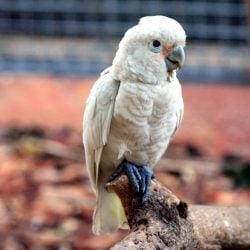 Bird RescueApril 29, 2025How Do We Re-Home a 17 yr Goffin Cockatoo?
Bird RescueApril 29, 2025How Do We Re-Home a 17 yr Goffin Cockatoo?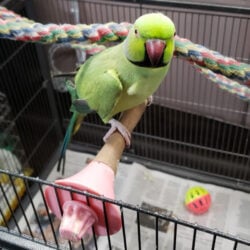 The Traveling BirdApril 17, 2025For Flying Should My Pet Bird Be in the Cabin or the Cargo Hold?
The Traveling BirdApril 17, 2025For Flying Should My Pet Bird Be in the Cabin or the Cargo Hold?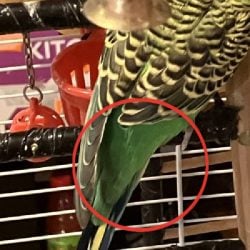 Bird Cage InfoMarch 6, 2025What Happened to Lemons Missing Flight Feathers?
Bird Cage InfoMarch 6, 2025What Happened to Lemons Missing Flight Feathers?
